Prime rib roast
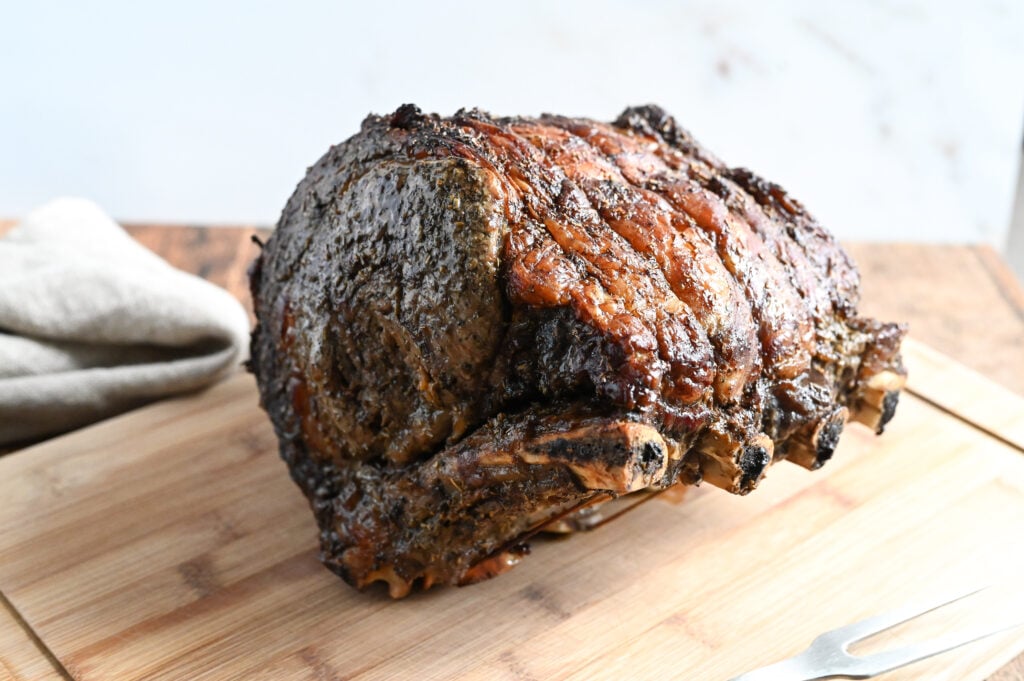
The best prime rib roast recipe for any special occasion.
If you have a special occasion coming up, or if you just want to indulge in a fancy meal (you deserve it!) we have the perfect recipe for you. Our prime rib roast is a celebratory meal and we often serve it for family birthday dinners, Father’s Day, Christmas lunch, or any other event that we feel is worthy of it, like a weekend!
What is prime rib, actually?
This is the portion of beef which is cut from the primal rib between ribs 6 – 12. It is also called standing rib roast. This alternate name is used because prime rib is often roasted standing on the rib bones. Although a prime rib includes the section of beef between ribs 6 – 12, it doesn’t have to; it can be a smaller subsection of this.
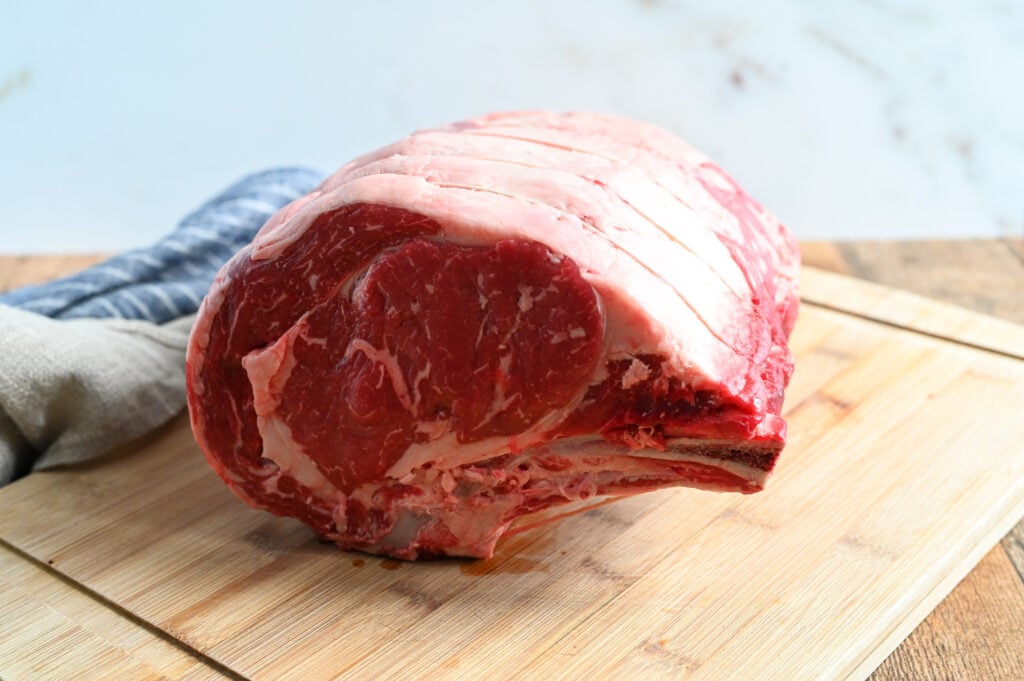
What is the secret to making the best prime rib roast?
There are a few different ways to ensure that you end up with a phenomenal rib roast. The first is to roast your meat initially at a high temperature to get a nice outer crust and then finishing it at a lower temperature. This is the method we use in this recipe. You could also cook at a lower temperature, slow roasting it in the oven and then searing it at the end in a pan set over high heat.
We use a flavourful but not overpowering rub which does not include salt. We don’t add salt because this tends to draw moisture out of your meat. So, our rub is an emulsion of other delicious things, but never salt!
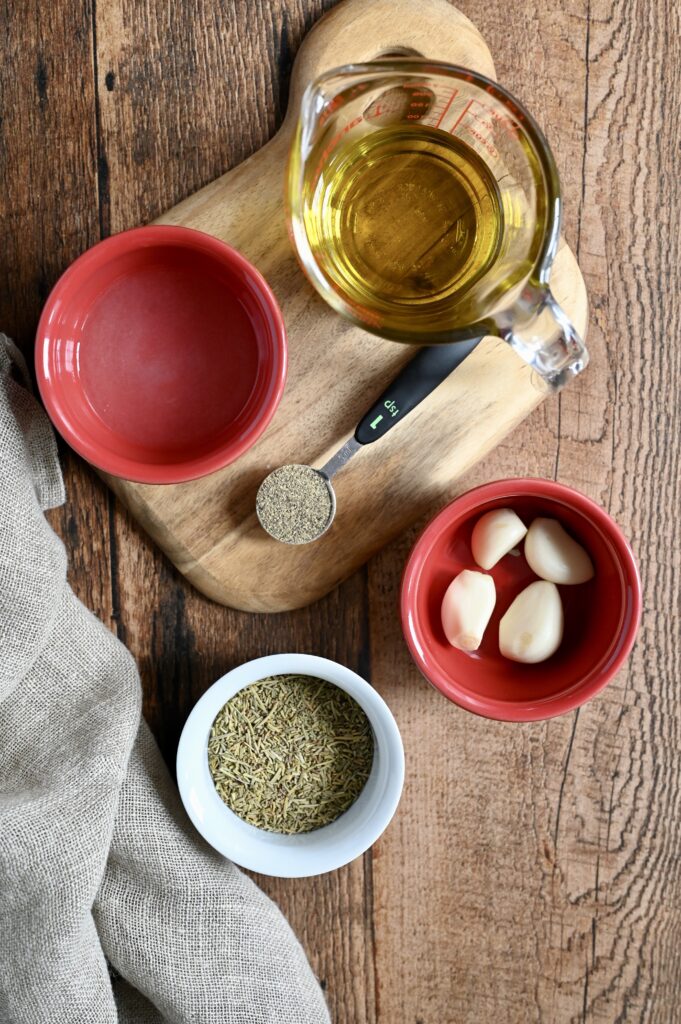
Buying a good quality meat is always important, so it is really important to purchase your prime rib from a butcher that you trust. When we purchase our prime rib from the butcher, we ask him to separate the rib bones from the meat. Then, he reattaches the bone to the meat, just as it was, with butcher’s twine. The reason for this? You retain all of the delicious flavour and moisture that the roasting bones impart to the meat, but when it comes time to carving your cooked roast, it is so easy! We learned this trick from a family friend years ago and have been doing it every since!
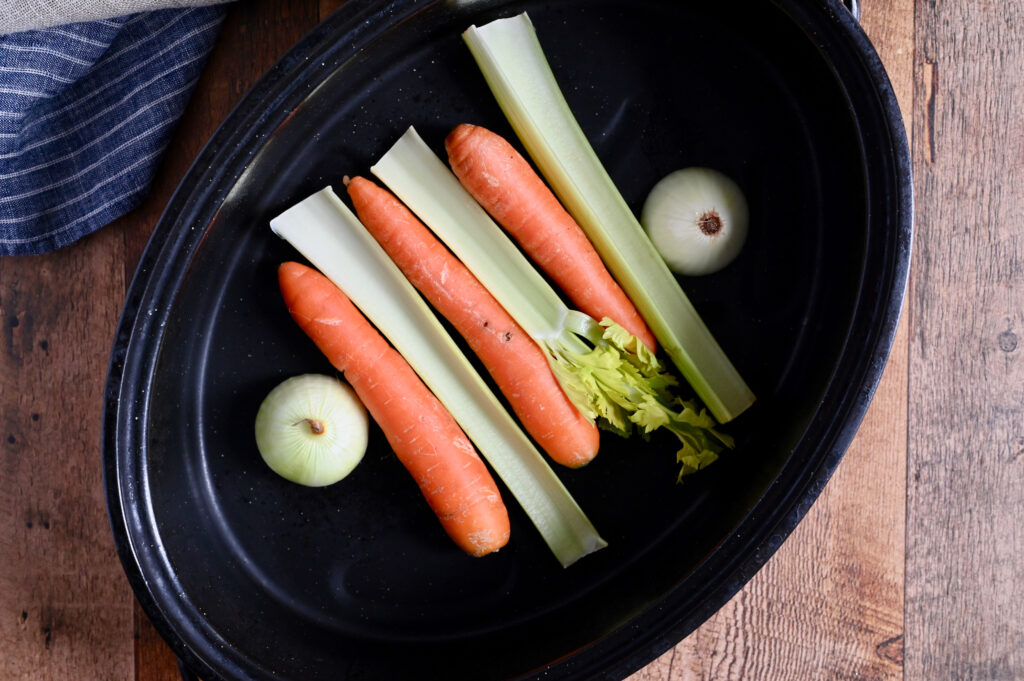
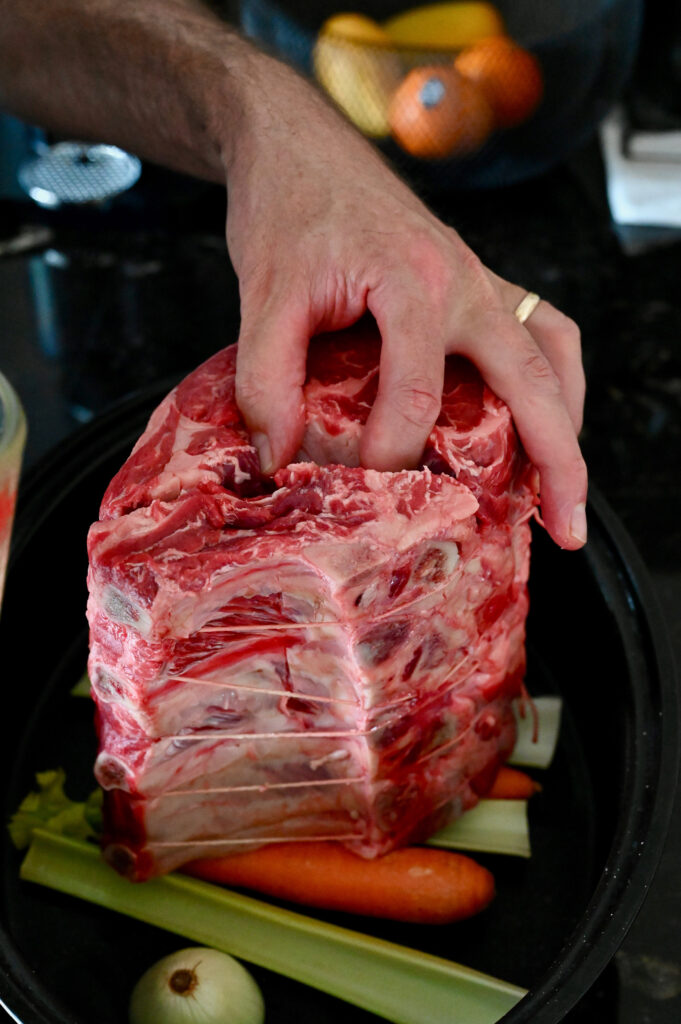
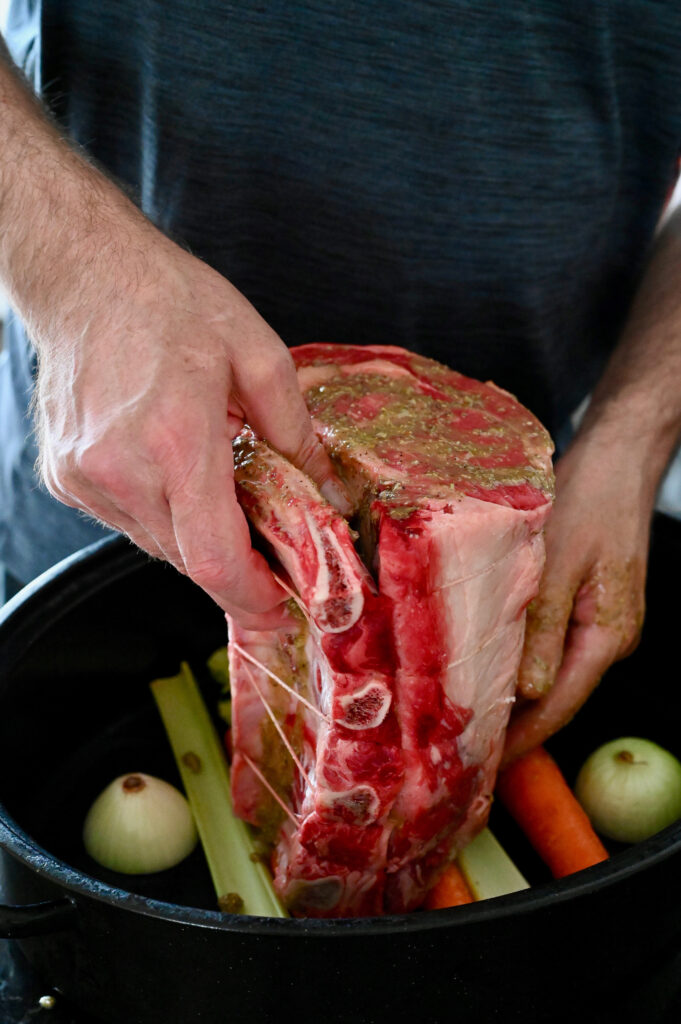
Do I really need a meat thermometer to make the prime rib roast?
Yes. Sorry to be so direct, but Yes, absolutely! We don’t know about you, but buying a prime rib roast that will feed 4 – 8 people is something of an investment; this is an expensive meal. The last thing you want to do is ruin your prime rib because you have either over-cooked it, or undercooked it to the point where you finish it off in a skillet (or horrors, the microwave!). Meat thermometers are not that expensive and having one available will take the guessing out of any meat or poultry you cook. We use our meat thermometers to check our roasted chicken, our veal roasts and our lamb cooked in the oven. Be sure to purchase a meat thermometer that not only registers the temperature of your food, but also indicates at which temperature various meats are considered safe to eat. We like this one.
When using your meat thermometer be sure to insert it into the thickest part of the meat, getting as far into the center as possible. Do not hit bone or fat as this will affect your internal temperature reading, and it will not be accurate.
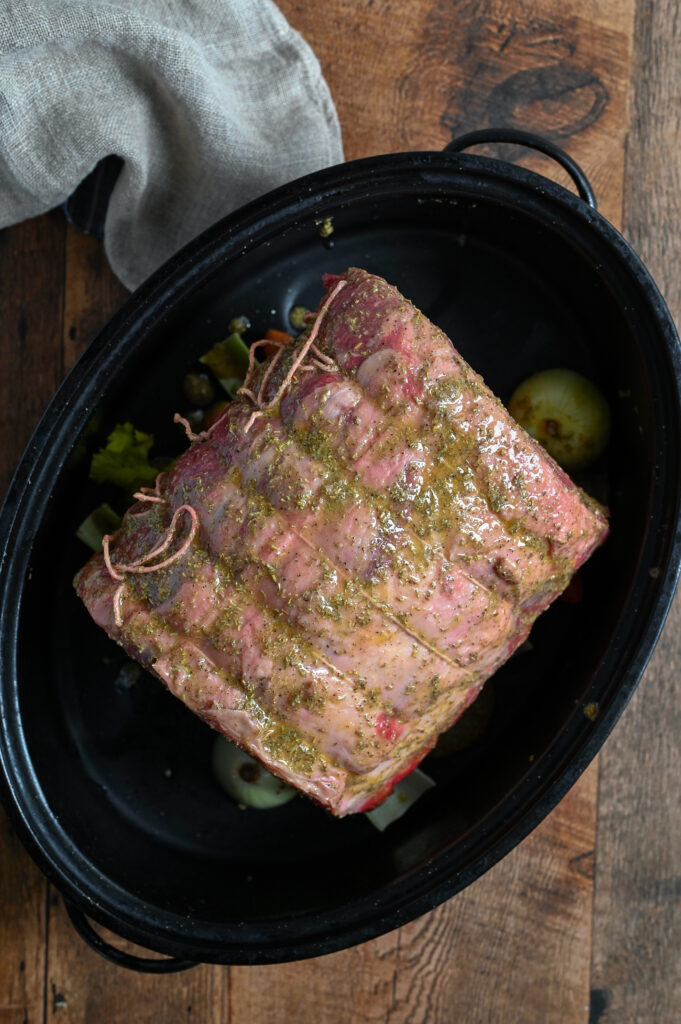
What should be the internal temperature of my prime rib roast?
It depends on how you like your prime rib. We tend to prefer it either medium rare or rare. Keep in mind that the edges of your prime rib will be more well done than the center; this is helpful if you have different preferences around your table.
- Rare- 120-125 degrees Fahrenheit (middle is bright red, pinkish toward the exterior portion).
- Medium-rare– 125- 135 degrees Fahrenheit (middle is very pink, slightly brown toward the exterior portion).
- Medium – 135- 140 degrees Fahrenheit (middle is light pink, outer portion is brown).
- Medium Well-140- 150 degrees Fahrenheit (not pink)
- Well-done– 155 + degrees Fahrenheit
Why does the recipe say to let the cooked prime rib stand at room temperature for 20 minutes? Won’t it get cold?
This is actually a really important step, and one that many people neglect to follow when they roast meat. The reason you want your meat to sit for 20 – 30 minutes is so that the juices which have been released in the cooking settle back into the center of the meat. Otherwise, if you cut your meat immediately, you will see all sorts of juices running out, all over your cutting board. Not only will this make a mess, more importantly, this will lead to drier meat – or at least meat that is not as juicy as it could be. Do not skip this step!
And no, your meat won’t get too cold. In fact, after you remove your prime rib roast from the oven it will continue to cook, generally the internal temperature will increase by 5 degrees Fahrenheit. That is why in the recipe we advise you to remove the meat when it is still 5 degrees F. below what you want it to be.
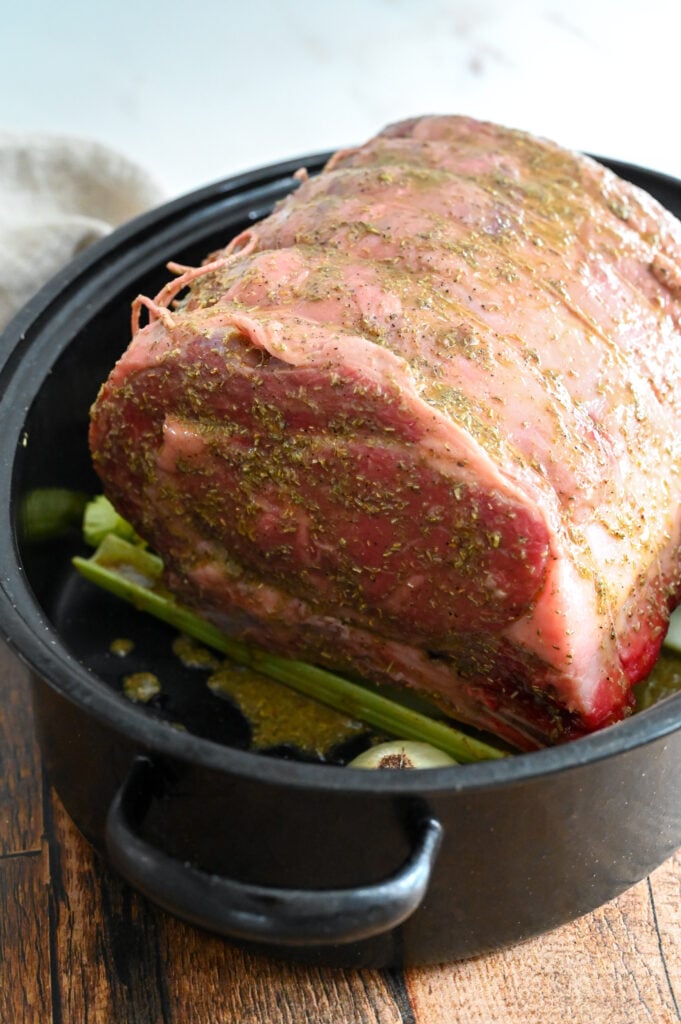
What can I serve with my prime rib roast?
We almost always serve our prime rib roast with roasted lemon potatoes – they are such a perfect pair! You can also add a nice Greek lettuce salad, or maroulosalata. The light herbiness of this salad goes really well with the rich and decadent meat and potatoes. If you prefer rice over potatoes, our vegetable studded rice would go nicely.
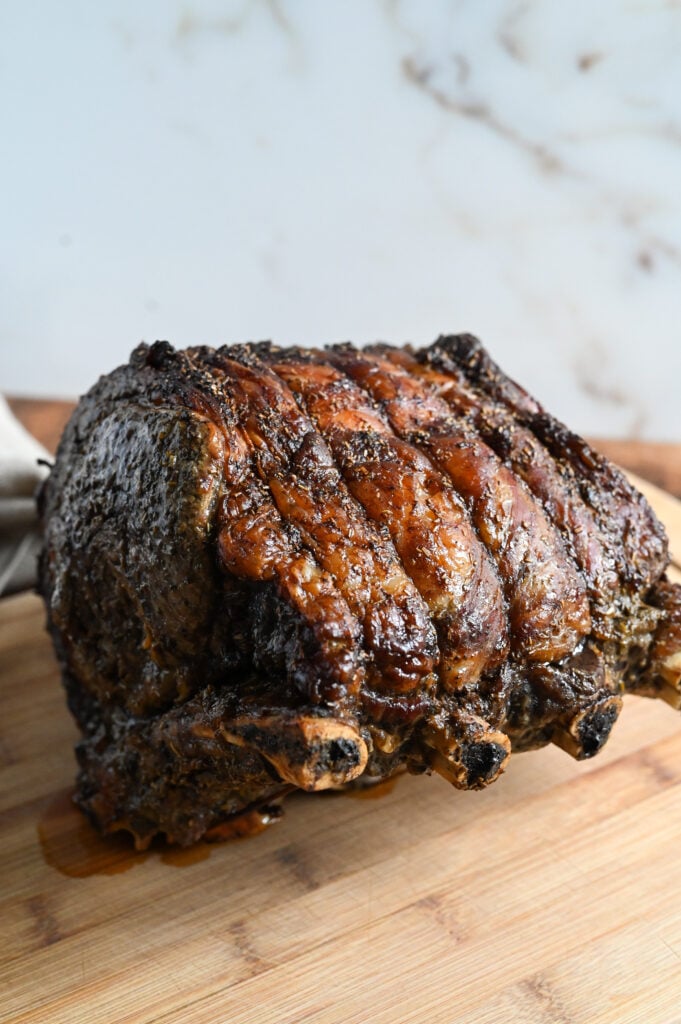
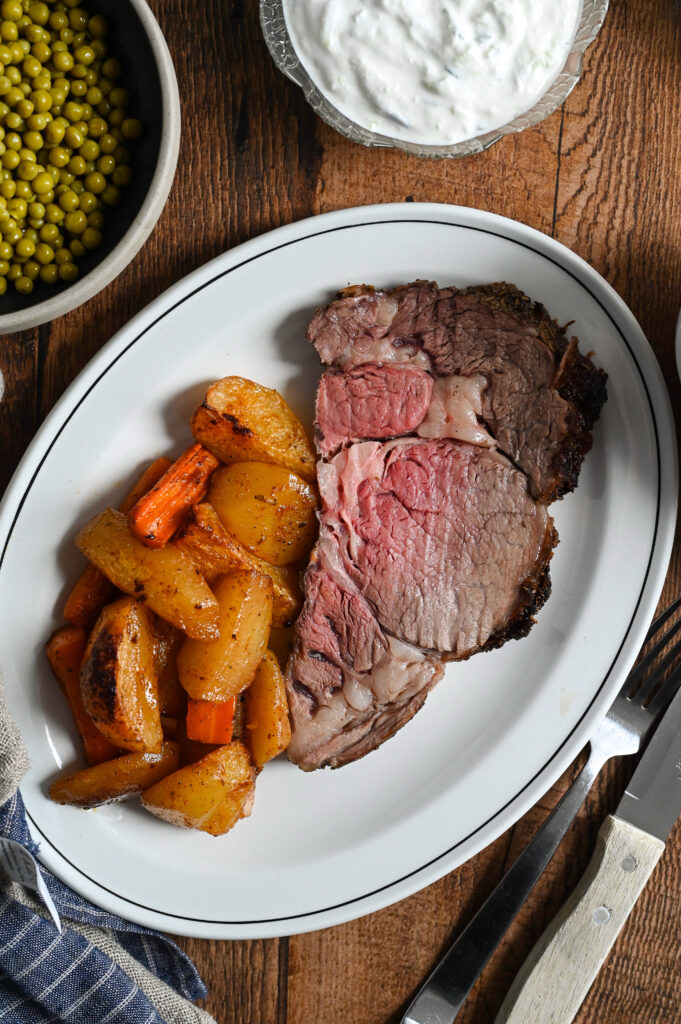
A great meal like prime rib deserves a decadent dessert! How about these ideas:
We love hearing from you! If you have made our recipes, or if you have a question or comment, or simply want to say Hi!, please leave a comment below!
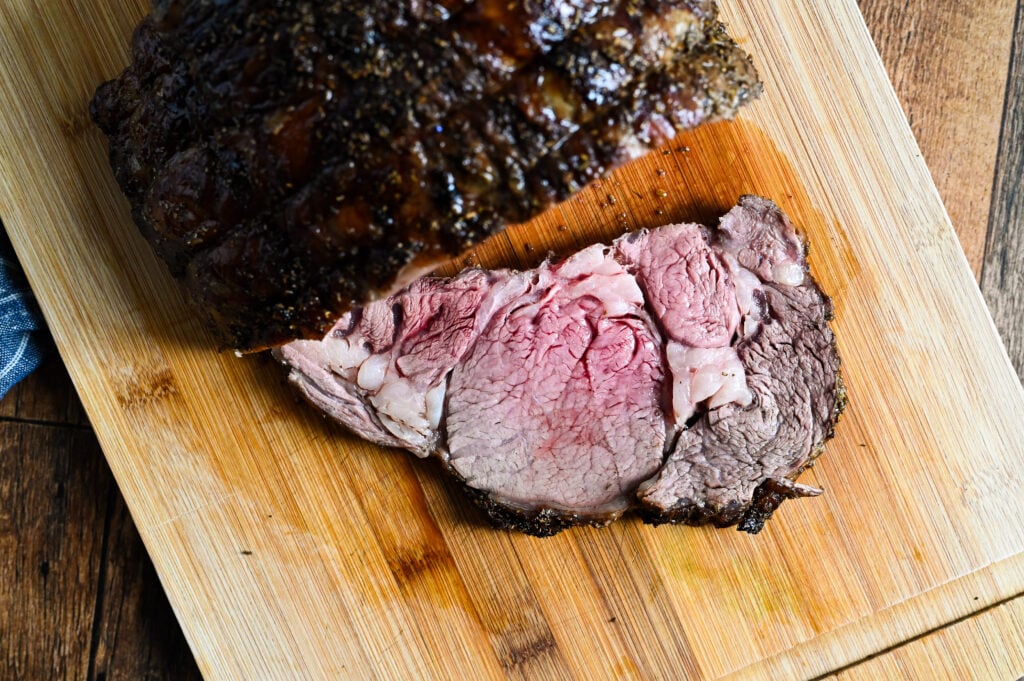

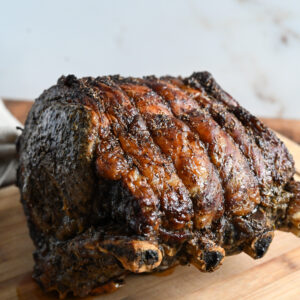
Prime rib roast
Equipment
- Roasting pan
- Meat thermometer
Ingredients
We didn't put the cooking time above, because it really depends on your oven and size of your prime rib roast. Expect a total cooking time, of approximately 2-4 hours, for a prime rib of 6-10 pounds.
- 8 lb prime rib, with ribs removed and tied back on ask your butcher to do this
- 1/3 cup (80 mL) olive oil
- 2 tbsp (30 ml) lemon juice
- 3 tbsp dried or fresh rosemary leaves
- 4 garlic cloves, minced
- 1 tsp black pepper
- 2 carrots peeled, and kept whole
- 2 celery stalks kept whole
- 1 yellow onion peeled and sliced in half
Instructions
- Allow the roast to sit at room temperature for about 45 minutes. This will help it cook evenly.
- During that time, prepare your rub by combining the olive oil, lemon juice, rosemary leaves, minced garlic and black pepper. We like to emulsify it using a hand mixer.
- Preheat oven to 475 degrees F.
- Line the middle of your roasting pan with the carrots, celery and onions.
- Place your prime rib, with the ribs down, on top of the vegetables. Rub the meat with your marinade mixture. Pour some of the marinade down the opening between the ribs and meat. See picture above.
- Place the roast in the preheated 475 degree F. oven for 20 minutes; this will sear the outside of the meat, and seal in the juices.
- Reduce heat to 350 degrees F., and cook according to your preferences. See internal temperature chart above. We suggest 20 minutes per pound, for a medium roast and 15 minutes per pound for medium rare. Note that a meat thermometer is the only way to guarantee a perfect roast, just the way you like it.
- To check the internal temperature of your roast, insert the thermometer in the thickest part of the meat. Avoiding touching fat or bone.
- Remove the roast from the oven when the thermometer reads 5 degrees below your desired preference. Transfer the meat onto a cutting board and cover loosely with aluminum foil for 20-30 minutes. This is an important step as your meat will continue to cook and the juices will also remain in the meat.
- Enjoy!

Hi! I assume the roast is not covered in the oven. Right?
Thanks correct! xox Helen & Billie